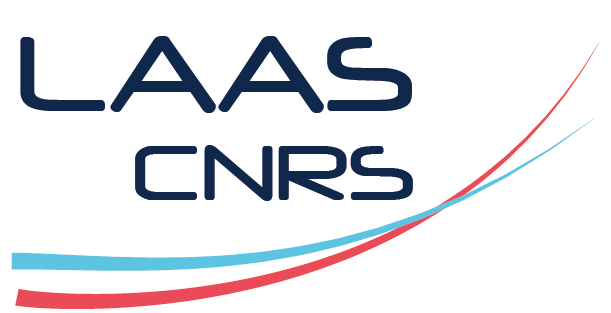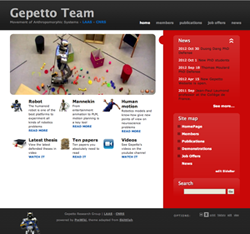L’activité de recherche de l’équipe Gepetto est centrée sur l’analyse et la génération de mouvement des systèmes anthropomorphes. Crée en 2006, elle est rapidement devenue l’une des équipes phares en robotique humanoïde, unanimement reconnue pour son expertise en génération de mouvement. La difficulté du problème de commande des systèmes anthropomorphes vient de la complexité de leur structure arborescente qui les rend redondants par rapport à la plupart des tâches de positionnement, de l’instabilité naturelle de leur posture bipède, et du sous-actionnement de leurs déplacement dans l’espace. Gepetto étudie ce problème en suivant une approche interdisciplinaire axées sur trois objets de recherche : le robot humanoïde, le mannequin numérique et l’homme.
La recherche au sein de l’équipe se structure en trois niveaux : fondamental, intégratif et applicatif.
- Le niveau fondamental regroupe différents développements théoriques relatifs à la modélisation et à la génération de mouvements. Le mot “Modélisation” est à comprendre au sens large. Il inclut la mécanique des systèmes robotiques, les mathématiques liées à de nouvelles représentations et de nouveaux opérateurs, et l’enregistrement et la représentation du mouvement humain. La “Génération de mouvement” va de la planification globale de trajectoires à la commande locale du mouvement, les deux problèmes étant considérés sous différents types de contraintes. Ces développements s’appuient sur des disciplines complémentaires telles que les mathématiques, la mécanique, l’automatique, et l’informatique, mais également la biomécanique et les neurosciences du mouvement, en collaboration avec des spécialistes des sciences du vivant.
- Le niveau intégratif constitue notre coeur de métier. In concerne l’intégration de nos développements théoriques dans des paquets logiciels avancés que nous nous efforçons de maintenir et de rendre accessibles à la communauté en utilisant des formats et des outils standards.
- Le niveau applicatif concerne nos contributions à différents domaines tels que la robotique de service, la robotique industrielle et notamment l’usine du futur, l’ergonomie du mouvement dans le contexte du l’étude du cycle de vie d’un produit (PLM), la conception de nouveaux actionneurs, l’animation graphique, l’imitation et la compréhension du mouvement humain, etc.
Le site Gepetto Team décrit en détails ces activités. Bonne visite!


